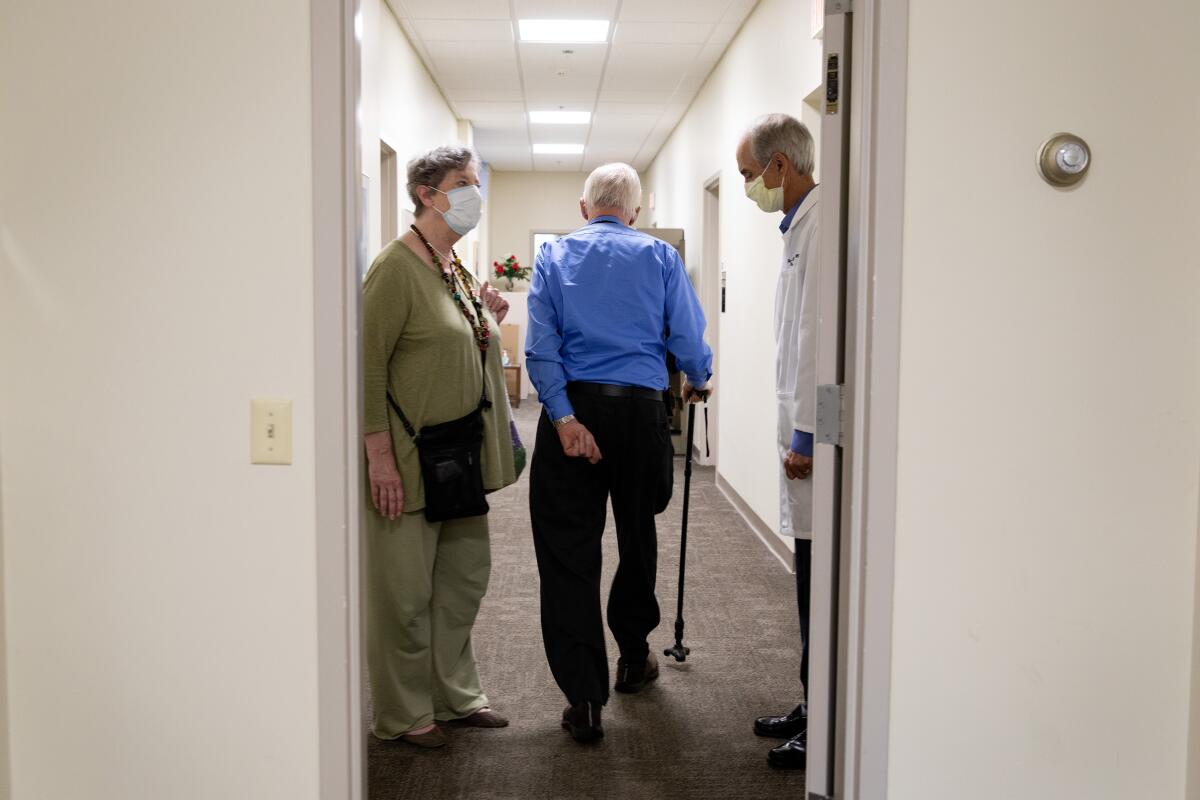Alzheimer’s disease expected to more than double in Orange County by 2040

- Share via
Along with the rest of California, Orange County will see a steep increase in the prevalence of Alzheimer’s disease in the next several years.
According to a report recently released by the California Department of Public Health, people 55 and older with Alzheimer’s will increase by 122%, and people 65 and older with the disease will increase by 136% in Orange County by 2040. The number of Californians with the disease is expected to more than double during that time.
“We already know Alzheimer’s has a significant impact in the county today,” said Jared Giarrusso, government affairs director for the Alzheimer’s Assn. “Families who have to make caregiving choices need to be prepared, their workforces need to be prepared to meet the needs of those living with Alzheimer’s ... So we know that there’s already that significant impact, but seeing the level of growth over the next 20 years just shows that we need additional focus and attention to improve all of these systems to help folks receive the things that they need and that they will depend on while they’re living with the disease.”
Giarrusso said that the primary cause of the increase in the disease is an aging population. Age is the main risk factor for Alzheimer’s, which causes progressive mental deterioration including loss of memory.
Giarrusso said the increasing prevalence of the disease will impact individual finances as well as the local economy due to lost productivity in the workforce. Alzheimer’s requires intensive care, and businesses need to be prepared to meet the needs of those struggling with it, Giarusso said. Care for somebody with Alzheimer’s can exceed $10,000 a year, putting significant financial strain on families.
Another hurdle for the county is ensuring that people have access to timely and accurate diagnoses, because less than half of the people living with the disease have been diagnosed.
The exhibit, presented by the Stable Anchor Manor Foundation, allows the Westminster-based charity to continue its work.
“That means that they’re making their care choices at a later stage and have less time to plan financially and figure out what that plan will look like,” he said.
Access to medical care is particularly important for the Latino, Black and Asian American populations of Orange County.
The report shows that by 2040 the number of Latinos living with Alzheimer’s in the state will more than triple and the presence of the disease in the Black community will nearly triple. The number of Asian Americans and Pacific Islanders living with the disease in California will more than double. Giarrusso said that the higher prevalence in Black and Latino communities may be partially due to higher rates of vascular disease because research indicates a link between brain and heart health.
According to U.S. Census data, the Orange County population is 22% Asian American and Pacific Islander, 34% Latino and 2% Black.
“Counties that see a larger aging population and more diversity will see higher rates of growth over the next 20 years,” Giarrusso said.
As these vulnerable communities contend with the ramifications of Alzheimer’s in the decades ahead, they may also face a lack of access to vital healthcare. Larissa Haiker, family services manager at the Alzheimer’s Assn.’s Orange County chapter, said that these communities have less opportunity to get diagnosed due to a lack of access, so they are less supported as they live with the disease.
“Then we’ve lost all this time,” she said. “If they had a diagnosis earlier, access to care earlier, the family could have been planning ahead for the future, trying to figure out how they are going to pay for care and coordinating legal and financial documents.”
Haiker didn’t have specifics on what communities in Orange County would likely be most impacted. But Orange County cities with high concentrations of Black, Latino and Asian American residents are Anaheim, Santa Ana, Garden Grove, Fountain Valley, Westminster, Irvine and La Palma.
Haiker said the association will host community input sessions next year for the vulnerable communities of Orange County. The association also has a 24-hour helpline for people seeking support with Alzheimer’s disease.
In the years ahead, Haiker said cities and the county could work together to make brain health awareness a priority. She said that many people who call the helpline reference that they wish they would have known sooner about available care for the disease.
Orange County Health Care Agency spokesman Ed Mertz said there are no Alzheimer’s programs currently planned.
“People are struggling and by the time they do know there’s a support group or there is information about how to navigate this path, they’ve already been dealing with it for like five years plus,” Haiker said. “They wish they would have known sooner. So I think raising awareness about what you can do to maintain brain health and age well, and then also let people know when resources are available.”
All the latest on Orange County from Orange County.
Get our free TimesOC newsletter.
You may occasionally receive promotional content from the Daily Pilot.





